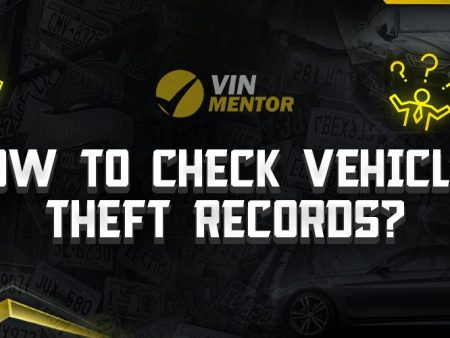

Every vehicle comes with a unique 17-character identification number called a Vehicle Identification Number (VIN). It is like a fingerprint that is used to identify and track a vehicle’s history, including ownership, accidents, and repairs. The VIN is also critical for insurance, registration, and other legal purposes. However, in some rare cases, you may need to change the VIN on your car legally. In this article, we will discuss how to do it and the legal implications of doing so.
Key Takeaways
- Changing the VIN on a car is a complicated and highly regulated process.
- It is illegal to tamper with or remove the VIN on a vehicle.
- Changing the VIN can only be done for legitimate reasons, such as correcting a mistake or replacing a damaged component.
- Changing the VIN without proper authorization is a serious offense that can result in fines and imprisonment.
The Process of Legally Changing the VIN on a Car
Changing the VIN on a car is not a simple process, and it involves several steps and legal requirements. Here are the key steps involved in legally changing the VIN on a car:
- Get authorization from the DMV. Before you can change the VIN on your car, you need to get authorization from the Department of Motor Vehicles (DMV). The DMV will only approve the request if there is a legitimate reason for changing the VIN, such as a mistake on the original VIN or replacing a damaged component that has a different VIN.
- Obtain a replacement VIN plate. Once you get authorization from the DMV, you need to obtain a replacement VIN plate with the new VIN. You can order a replacement VIN plate from the manufacturer or a licensed dealer.
- Install the replacement VIN plate. Once you receive the replacement VIN plate, you need to install it on your car. The replacement VIN plate must be installed in the same location and manner as the original VIN plate.
- Update the vehicle’s documentation. After installing the replacement VIN plate, you need to update the vehicle’s documentation, including the title, registration, and insurance. You need to provide the DMV with proof of the new VIN and documentation showing the legitimate reason for changing the VIN.
- Obtain an inspection. Finally, you need to get an inspection from a licensed mechanic or an authorized inspection station. The inspection is to ensure that the new VIN plate is installed correctly and that the vehicle is roadworthy.
Legal Implications of Changing the VIN
Changing the VIN on a car is a serious offense that can result in fines and imprisonment. The VIN is a critical component of a vehicle’s identity, and tampering with or removing it is illegal. Changing the VIN without proper authorization is a federal crime that carries severe penalties.
One of the main reasons why changing the VIN is illegal is to prevent fraud. Fraudsters may change the VIN to hide the fact that the vehicle has been stolen, salvaged, or involved in an accident. Changing the VIN makes it difficult for authorities to track the vehicle’s history and identify any potential issues.
Conclusion
Changing the VIN on a car is a complicated and highly regulated process that should only be done for legitimate reasons. It is illegal to tamper with or remove the VIN on a vehicle, and changing the VIN without proper authorization is a serious offense. If you need to check a vehicle’s history, you can do so by performing a VIN check. There are many online VIN check websites that provide detailed reports on a vehicle’s history, including accidents, thefts, and repairs. To ensure the accuracy of the report, we recommend using one of our recommended best VIN Check Websites.
FAQ
Can I change the VIN on my car if I want to personalize it or make it unique?
No, changing the VIN on a car for personalization purposes is illegal. The VIN is a standardized identification number assigned to each vehicle by the manufacturer, and altering it without proper authorization is a serious offense.
What are some legitimate reasons for changing the VIN on a car?
Legitimate reasons for changing the VIN include correcting a mistake on the original VIN, replacing a damaged component with a different VIN, or if the vehicle has been assigned multiple VINs due to manufacturing errors.
How do I obtain authorization from the DMV to change the VIN on my car?
To obtain authorization from the DMV, you will need to provide valid documentation supporting your legitimate reason for changing the VIN. This may include evidence of an error in the original VIN or documentation of the damaged component that needs replacement.
Are there any costs associated with legally changing the VIN on a car?
The process of changing the VIN on a car may involve costs such as obtaining a replacement VIN plate from the manufacturer or licensed dealer. Additionally, there may be administrative fees involved when updating the vehicle’s documentation with the new VIN.
What are the consequences of changing the VIN on a car without proper authorization?
Changing the VIN without proper authorization is a serious offense and can lead to legal consequences. Depending on the jurisdiction, the penalties can include fines, imprisonment, or both. Additionally, unauthorized changes to the VIN can raise suspicions and make it difficult to sell or register the vehicle in the future.












